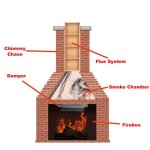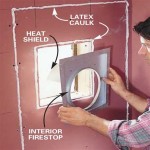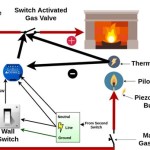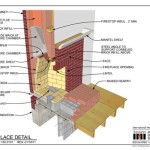Fireplace Bumpers for Babies: Ensuring Child Safety Around the Fireplace
Fireplaces can be a focal point in a home, offering warmth and ambiance. However, they also pose a significant safety risk, especially for crawling and newly walking babies. The hard edges and potential for burns make fireplaces a hazard requiring proactive childproofing measures. Fireplace bumpers are designed to mitigate these risks, providing a padded barrier that helps prevent injuries. This article explores the types, features, and installation considerations for fireplace bumpers, focusing on how they contribute to a safer home environment for infants and toddlers.
Babies explore their environment primarily through touch, and their natural curiosity often leads them to potentially dangerous areas. Fireplaces, with their hard surfaces and often decorative elements, are particularly attractive to little hands. A fireplace bumper acts as a physical barrier, preventing babies from accessing the edges and corners of the hearth. While close supervision is paramount, a bumper offers an extra layer of protection, allowing parents and caregivers to have greater peace of mind.
Types of Fireplace Bumpers
Fireplace bumpers are available in a variety of materials and designs, each offering different levels of protection and aesthetic appeal. Understanding the various types allows caregivers to choose the option best suited for their specific fireplace and home décor.
Foam Bumpers: These are typically made of dense, shock-absorbing foam and are designed to adhere directly to the fireplace hearth. Foam bumpers are often the most affordable option and are relatively easy to install. They are usually available in various colors and sizes, allowing for some customization. However, foam bumpers may not be the most durable option, as they can be susceptible to tearing or being pulled off by persistent toddlers. They also may not offer the same level of aesthetic appeal as other types of bumpers.
Edge and Corner Guards: These are smaller, individual pieces designed to cover sharp edges and corners of the fireplace. Typically made from silicone, PVC, or rubber, these guards offer a more targeted approach to safety. Edge and corner guards are often transparent or available in neutral colors, making them less noticeable than larger foam bumpers. They can be a good option for fireplaces with a more intricate design where a full bumper would obscure the aesthetic.
Custom-Made Bumpers: For fireplaces with unique shapes or dimensions, custom-made bumpers may be the best solution. These can be fabricated from various materials, including wood, metal, or upholstered padding, and are specifically designed to fit the fireplace hearth precisely. Custom bumpers offer the most aesthetically pleasing and durable option, but are generally more expensive than prefabricated alternatives. They may also require professional installation.
Inflatable Bumpers: Utilizing an air-filled cushion system, inflatable bumpers offer flexible protection that contours to the shape of the fireplace. Easy to install and remove, they are practical for temporary safeguard. However, the vulnerability to punctures and deflation poses a risk, demanding periodic checks and maintenance.
Key Features to Consider When Selecting a Fireplace Bumper
Choosing the right fireplace bumper involves considering several factors beyond just the type of material. Factors such as adhesion, durability, flame resistance, and ease of cleaning are important considerations.
Adhesion/Attachment: The strength and reliability of the adhesive or attachment mechanism are crucial. Bumpers that easily detach pose a choking hazard and negate the safety benefits. Look for bumpers that use strong, non-toxic adhesives or secure mounting hardware. For bumpers that rely on adhesive, ensure the surface of the fireplace is clean and free of debris before installation. Some bumpers may require drilling and screwing into the floor or wall, which offers a more secure attachment but may leave lasting marks.
Durability: The bumper should be able to withstand regular wear and tear, including impacts from a crawling or walking baby. Consider the material's resistance to tearing, puncturing, and compression. More durable materials, such as wood or metal, will generally offer longer-lasting protection than foam or silicone.
Flame Resistance: While the hearth itself is designed to withstand heat, the bumper should also be flame-resistant to minimize the risk of fire hazards. Check the product specifications to ensure the bumper meets relevant safety standards for flame retardancy.
Ease of Cleaning: Babies are messy, and the fireplace bumper is likely to come into contact with food, spills, and other debris. Choose a bumper that is easy to clean with common household cleaners. Materials like vinyl, silicone, or treated wood are typically easier to clean than foam or fabric.
Non-Toxic Materials: Ensure the fireplace bumper is constructed from non-toxic materials to prevent harm to the baby if they mouth or chew on it. Look for products that are labeled as BPA-free, phthalate-free, and lead-free.
Installation and Maintenance of Fireplace Bumpers
Proper installation is critical for maximizing the effectiveness of a fireplace bumper. It is important to follow the manufacturer's instructions carefully and to ensure the bumper is securely attached to the fireplace hearth. Regular maintenance, including cleaning and inspecting for damage, is also necessary to ensure the bumper continues to provide adequate protection.
Before installing any fireplace bumper, thoroughly clean the surface of the fireplace hearth to remove any dirt, dust, or grease. This will ensure a stronger bond for adhesive-based bumpers. Use a mild detergent and water, and allow the surface to dry completely before applying the bumper.
For adhesive bumpers, carefully peel off the protective backing and align the bumper with the edge of the fireplace hearth. Press firmly along the entire length of the bumper to ensure a secure bond. Allow the adhesive to cure for the recommended time before allowing the baby near the fireplace.
Regularly inspect the fireplace bumper for any signs of damage, such as tears, cracks, or loose attachment. Replace the bumper immediately if any damage is detected. Clean the bumper regularly with a damp cloth and mild detergent to remove any dirt or spills. Avoid using harsh chemicals or abrasive cleaners, as these can damage the bumper material.
Consider periodic checks on the adhesive strength. Over time, adhesives can weaken due to temperature changes or general wear and tear. Reapply adhesive as needed, or consider alternative attachment methods, such as mechanical fasteners, for added security. Furthermore, even with a fireplace bumper in place, never leave a child unattended near a fireplace. Constant supervision is the most effective measure to prevent injuries.

Babysafetyfoam Com Baby Proofing Fireplace Hearth Guard Bumper Pad Safety Cushion Cover Protection

Old Crib Bumper Around Fireplace And Other New Uses For Bumpers Sounds Like A Good Idea Us Baby Proof

Fireplace Remodel Paint Freestanding Tvs White And Mantels Contemporary Baby Proof Living Room Cover

Kidon Fireplace Bumper Pad Target

Cardinal Gates Metal Backed Hearth Guard Fireplace Baby Proofing Adjustable Bumpers For Babies Fits A 45 78 Wide And 8 18 Deep Made In The Usa Ivory Com

Cardinal Gates Kepk Large Hearth Pad Kit Fireplace Baby Proofing Adhesive Backed Bumpers For Babies Target

Safety 1st Foam Fireplace Hearth Bumper Hs252 The Home Depot

Fireplace Safety Baby Gates Screens Bumper Guards In Houston Tx Precious Protectors

Cardinal Gates Metal Backed Hearth Guard Fireplace Baby Proofing Adjustable Bumpers For Babies Fits A 45 78 Wide And 8 18 Deep Made In The Usa Ivory Com

My Diy Fireplace Bumper Bench Seat That Slides Forward As A Free Standing When We Light Fires Baby F Home Decor Remodel
Related Posts








